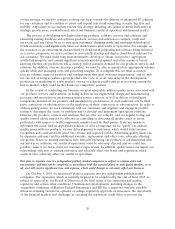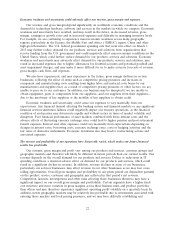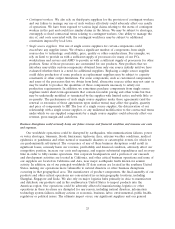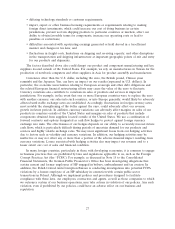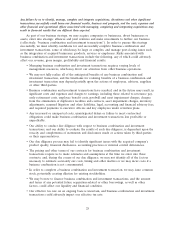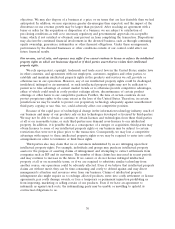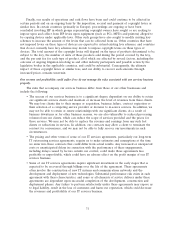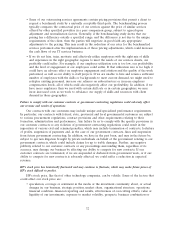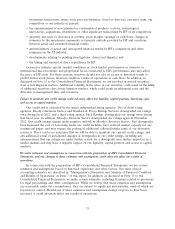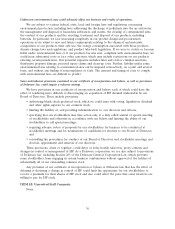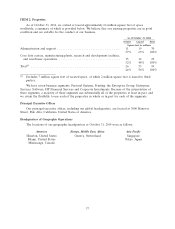HP 2014 Annual Report Download - page 35
Download and view the complete annual report
Please find page 35 of the 2014 HP annual report below. You can navigate through the pages in the report by either clicking on the pages listed below, or by using the keyword search tool below to find specific information within the annual report.• differing technology standards or customer requirements;
• import, export or other business licensing requirements or requirements relating to making
foreign direct investments, which could increase our cost of doing business in certain
jurisdictions, prevent us from shipping products to particular countries or markets, affect our
ability to obtain favorable terms for components, increase our operating costs or lead to
penalties or restrictions;
• difficulties associated with repatriating earnings generated or held abroad in a tax-efficient
manner and changes in tax laws; and
• fluctuations in freight costs, limitations on shipping and receiving capacity, and other disruptions
in the transportation and shipping infrastructure at important geographic points of exit and entry
for our products and shipments.
The factors described above also could disrupt our product and component manufacturing and key
suppliers located outside of the United States. For example, we rely on manufacturers in Taiwan for the
production of notebook computers and other suppliers in Asia for product assembly and manufacture.
Currencies other than the U.S. dollar, including the euro, the British pound, Chinese yuan
renminbi and the Japanese Yen, can have an impact on our results (expressed in U.S. dollars). In
particular, the economic uncertainties relating to European sovereign and other debt obligations and
the related European financial restructuring efforts may cause the value of the euro to fluctuate.
Currency variations also contribute to variations in sales of products and services in impacted
jurisdictions. For example, in the event that one or more European countries were to replace the euro
with another currency, our sales into such countries, or into Europe generally, would likely be adversely
affected until stable exchange rates are established. Accordingly, fluctuations in foreign currency rates,
most notably the strengthening of the dollar against the euro, could adversely affect our revenue
growth in future periods. In addition, currency variations can adversely affect margins on sales of our
products in countries outside of the United States and margins on sales of products that include
components obtained from suppliers located outside of the United States. We use a combination of
forward contracts and options designated as cash flow hedges to protect against foreign currency
exchange rate risks. The effectiveness of our hedges depends on our ability to accurately forecast future
cash flows, which is particularly difficult during periods of uncertain demand for our products and
services and highly volatile exchange rates. We may incur significant losses from our hedging activities
due to factors such as volatility and currency variations. In addition, our hedging activities may be
ineffective or may not offset any or more than a portion of the adverse financial impact resulting from
currency variations. Losses associated with hedging activities also may impact our revenue and to a
lesser extent our cost of sales and financial condition.
In many foreign countries, particularly in those with developing economies, it is common to engage
in business practices that are prohibited by laws and regulations applicable to us, such as the Foreign
Corrupt Practices Act (the ‘‘FCPA’’). For example, as discussed in Note 15 to the Consolidated
Financial Statements, the German Public Prosecutor’s Office has been investigating allegations that
certain current and former employees of HP engaged in bribery, embezzlement and tax evasion. In
addition, the Polish Central Anti-Corruption Bureau is conducting investigations into potential FCPA
violations by a former employee of an HP subsidiary in connection with certain public-sector
transactions in Poland. Although we implement policies and procedures designed to facilitate
compliance with these laws, our employees, contractors and agents, as well as those companies to which
we outsource certain of our business operations, may take actions in violation of our policies. Any such
violation, even if prohibited by our policies, could have an adverse effect on our business and
reputation.
27





